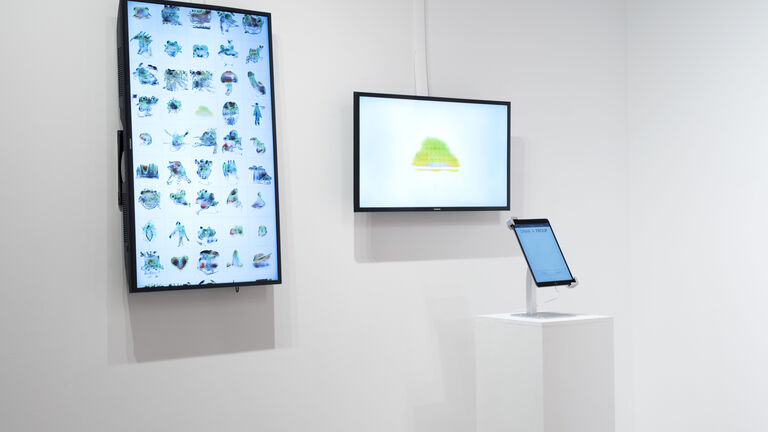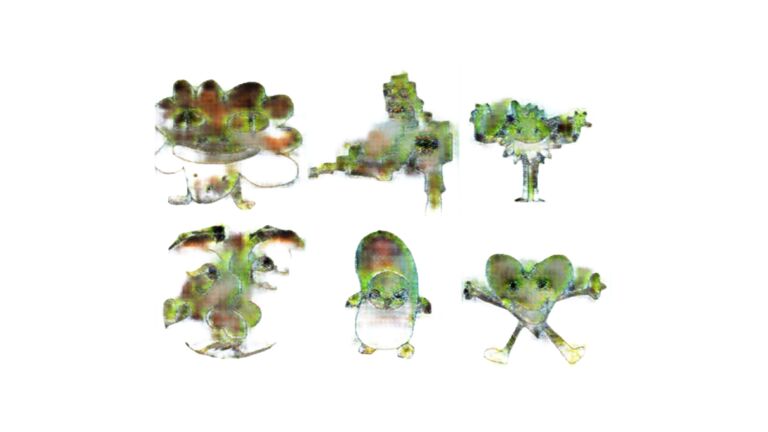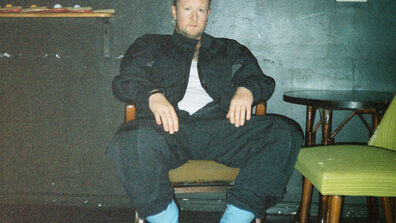
How It’s Made: Froups by Chloe Thompson
Draw a froup. That was the instruction given by School of the Art Institute of Chicago student Chloe Thompson (BFA 2023) as part of their installation in the Fall Undergraduate Exhibition, which led participants to collaborate with AI to create a collection of fantastical creatures. Developing user-friendly code for creative expression, Thompson’s work uses AI and viewer interaction to generate a museum of froups.
Thompson’s Froups project crosses the bounds of the natural and artificial both in technology and form. In the Fall Undergraduate Exhibition, two large screens were installed alongside an iPad directing the viewer to “draw a froup.” A collection of submissions by prior visitors shown on screen were the only visual context to what a froup may be, the concept remaining open to the visitors’ own interpretation. As the drawing was made, a built-in AI model re-interpreted the submission line by line to create a final image.
Thompson creates tools to be used by all for creative exploration and experimentation. Here, Thompson discusses the intersection of art and technology they explore in their work.
How has your artistic practice emerged during your time at SAIC?
When I first started as an undergraduate, I didn’t really know if art school was for me. I was really good at illustration, but I stumbled across an Art and Technology Studies / Sound Practices (AT/SP) class and I found out that I really liked to code. Ever since then, I’ve been exploring that intersection between art and technology, and what that looks like. Toward the second half of my studies, I started really pushing into code, and that’s what I’ve been focusing on.
I’ve gotten into the open source community. I’m really interested in writing libraries of code for people to use. I think creating these tools and allowing people to just kind of exploit them and see what they can do with them in a creative sense is exciting for me.
What is the technical process behind the froups?
The Froups project is basically a bunch of components put together. It started with a model that I trained specifically on images of frogs to try to understand what a frog is. After training that model, I trained a second model by taking apart the lines of frogs and training the second model to interpret the lines to the frog’s images. So I have two models that are interpreting the user’s lines that they’re drawing and then filtering through a frog generator to create the final image.
I have a server communicating between all my sites, and that's communicating with the pages that were displayed in the gallery, [so they] could be viewed anywhere in the world. [To exhibit the froups in the gallery,] I had S3-compatible object storage which stores files. So every time someone drew a froup, you could write a name, the date, and submit to be displayed. I also used a MongoDB database to store different properties about each froup (name, creator name, birthdate, birthplace, and more) for building on this project in the future.
What inspired the term froups?
Originally I had called them froogs and that was just a play on the name. Assistant Professor Douglas Rosman (MFA 2019) in the AT/SP department has a project called The Doogs. He has done some model training himself, so I was playing on that. As I was developing the project it just kind of came to me that they look almost soupy.
Can you explain the (UN)REAL Gallery and how your work relates to the exhibition?
In our Capstone class, we were trying to find words that encompassed all of our work [to title the gallery.] We didn’t pick the title and then make our work based off of it. We all presented what we wanted to do, and then tried to find the words. (UN)REAL is the intersection between fantasy and reality. I would say [my work] is definitely fantasy, but also kind of reality since it is trained on real images of frogs. But mine is a fantasy species that I’ve developed.
What is next for you and the froups?
I’m actually planning on becoming a web developer. I’m really interested in a lot of things that are going on behind the scenes, like how a computer works, how the codes actually communicate to the computer. I’m trying to find a job so I can continue to expand those skills. I just love learning code.
As for the Froups project, it exists on a website, but I want it so people can submit froups from anywhere. It’ll be a kind of website where people can draw froups, and then there will be a page that’s like an interactive museum. That was a big part of the project from the start. I wanted this huge museum of froups.

Image courtesy of the artist


